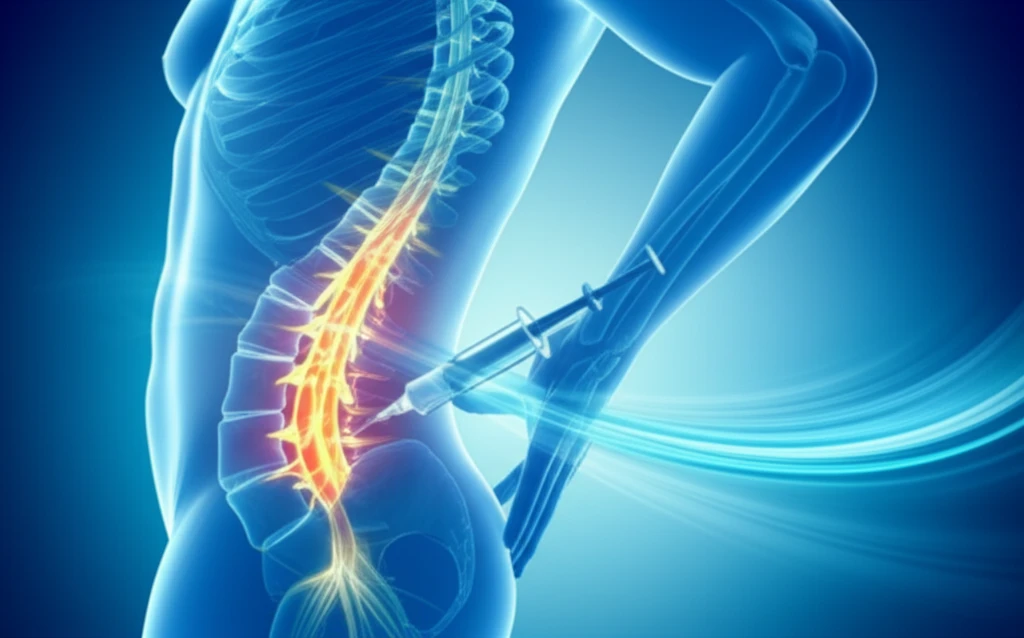
Back Pain Breakthrough: Can Epidural Injections Offer Lasting Relief?
"A new study explores the potential of combined epidural morphine and bupivacaine for long-term management of lumbosacral radicular neuropathic pain."
Chronic lower back pain, especially when it radiates down the leg (radicular pain), is a widespread issue that significantly impacts quality of life. Neuropathic pain, a type of chronic pain resulting from nerve damage or dysfunction, presents unique challenges. Traditional treatments often fall short, leaving many individuals searching for effective, long-lasting solutions.
While medications, physical therapy, and even surgery are common approaches, interventional techniques like epidural injections are gaining attention. Epidural injections deliver medication directly into the space surrounding the spinal cord, aiming to reduce inflammation and alleviate pain. Researchers are continuously exploring new combinations and methods to optimize these treatments.
A recent study published in the 'Journal of Pain Research' investigated the effectiveness of combining morphine and bupivacaine in epidural injections for individuals with chronic lumbosacral radicular neuropathic pain. The study's findings suggest a promising avenue for managing this debilitating condition, offering hope for extended pain relief even after the treatment is discontinued.
How Does Combined Epidural Treatment Work?

The study enrolled 22 patients experiencing chronic lumbosacral pain with neuropathic characteristics. Each participant received epidural injections of morphine and bupivacaine up to three times daily for four weeks. A catheter was placed in the epidural space to facilitate medication delivery. The study tracked pain intensity using a 0-10 Numeric Rating Scale (NRS) and the Total Pain Rating Index (PRIr-T) before treatment and one month after the catheter was removed.
- Morphine: An opioid analgesic that reduces pain signals by binding to receptors in the brain and spinal cord.
- Bupivacaine: A local anesthetic that blocks nerve conduction, providing pain relief by numbing the affected area.
- Synergistic Effect: The combination of morphine and bupivacaine may produce a synergistic effect, enhancing pain relief compared to using either medication alone.
The Future of Pain Management
The study's findings suggest that combined epidural morphine and bupivacaine can be an effective treatment for chronic neuropathic pain. This approach offers a valuable option for individuals who haven't found relief from traditional methods. Further research is needed to assess the long-term safety and efficacy of this treatment and to identify which patients are most likely to benefit. As we continue to explore innovative pain management strategies, hope grows for those seeking lasting relief from chronic pain.
